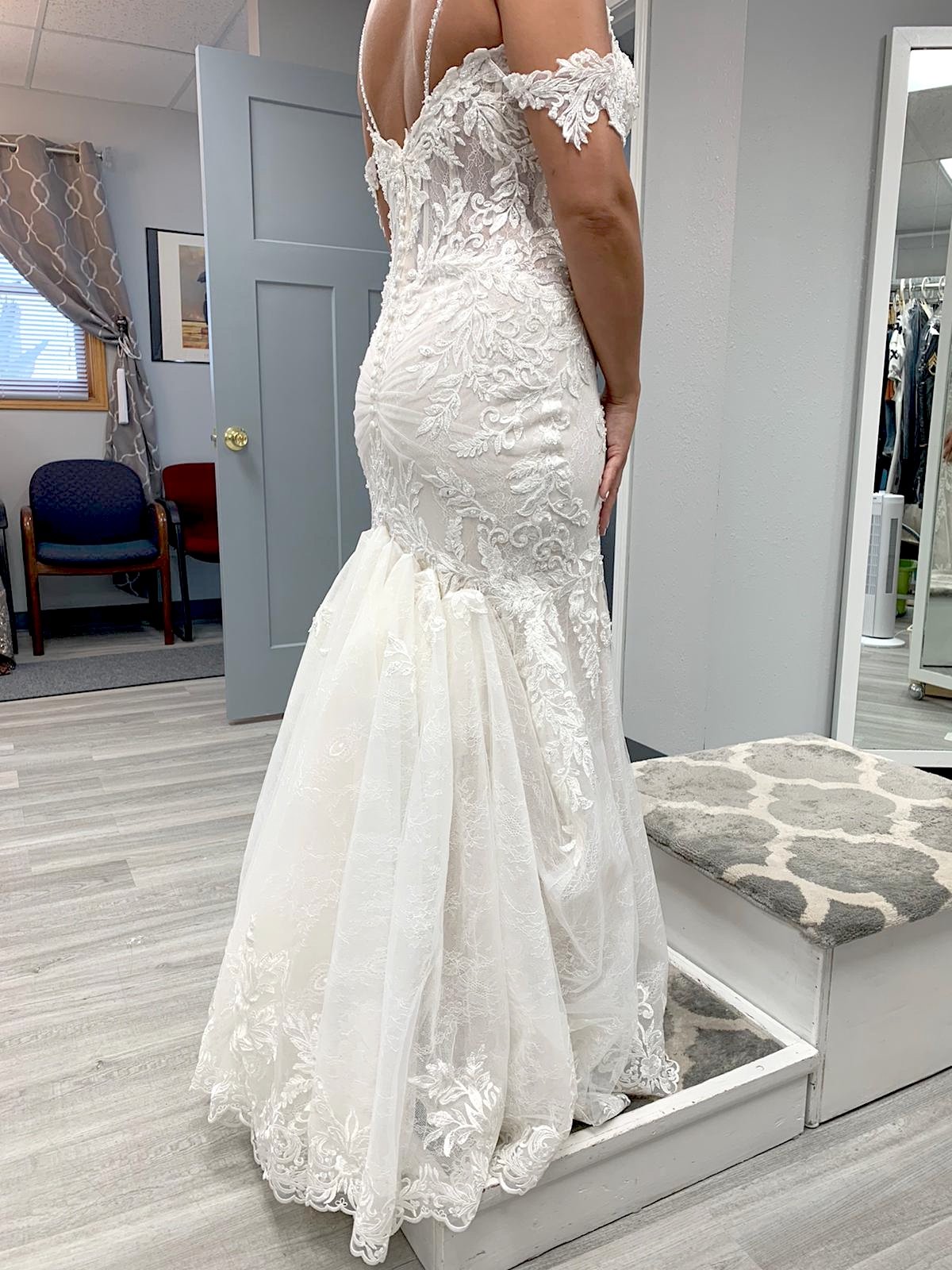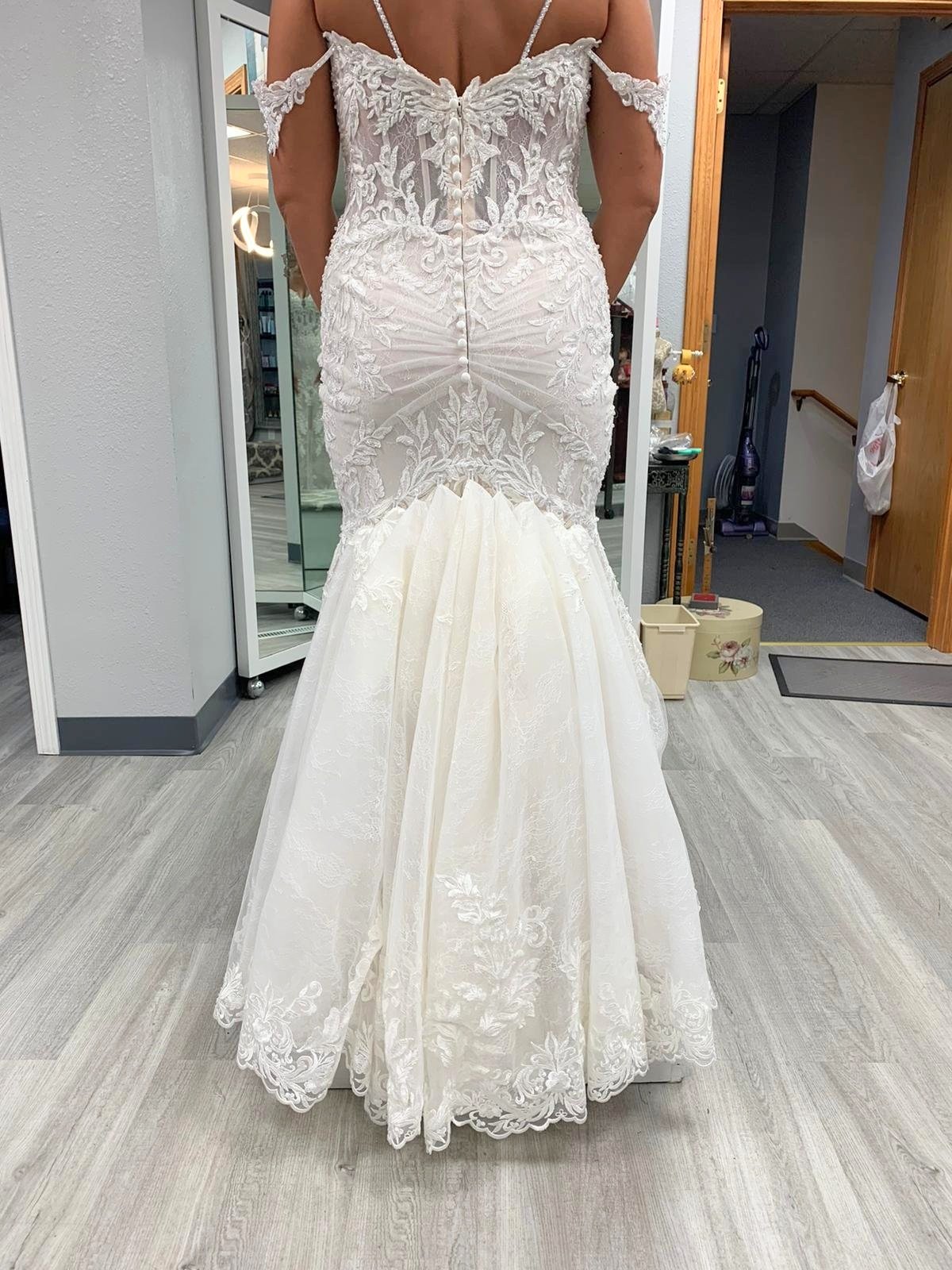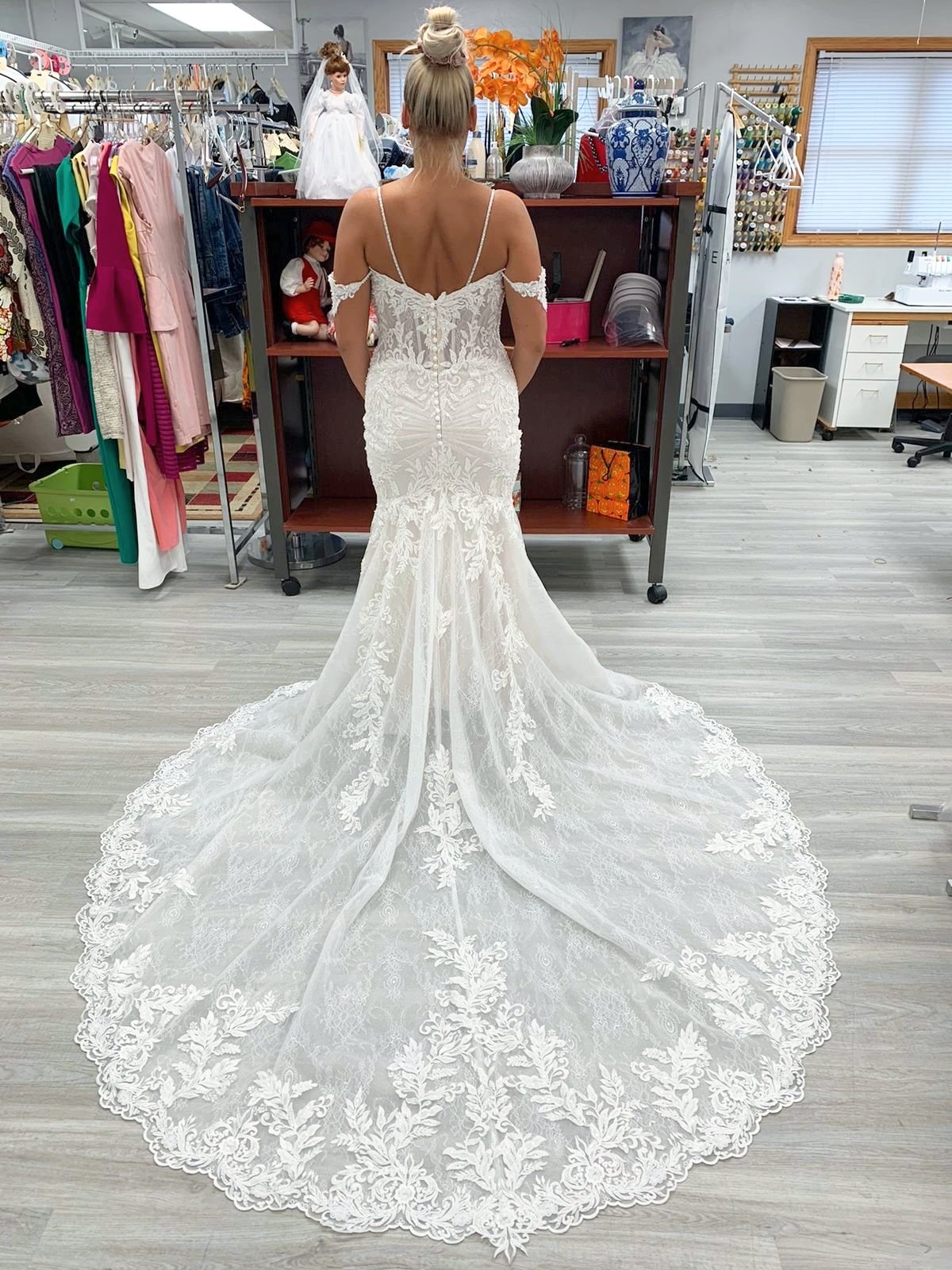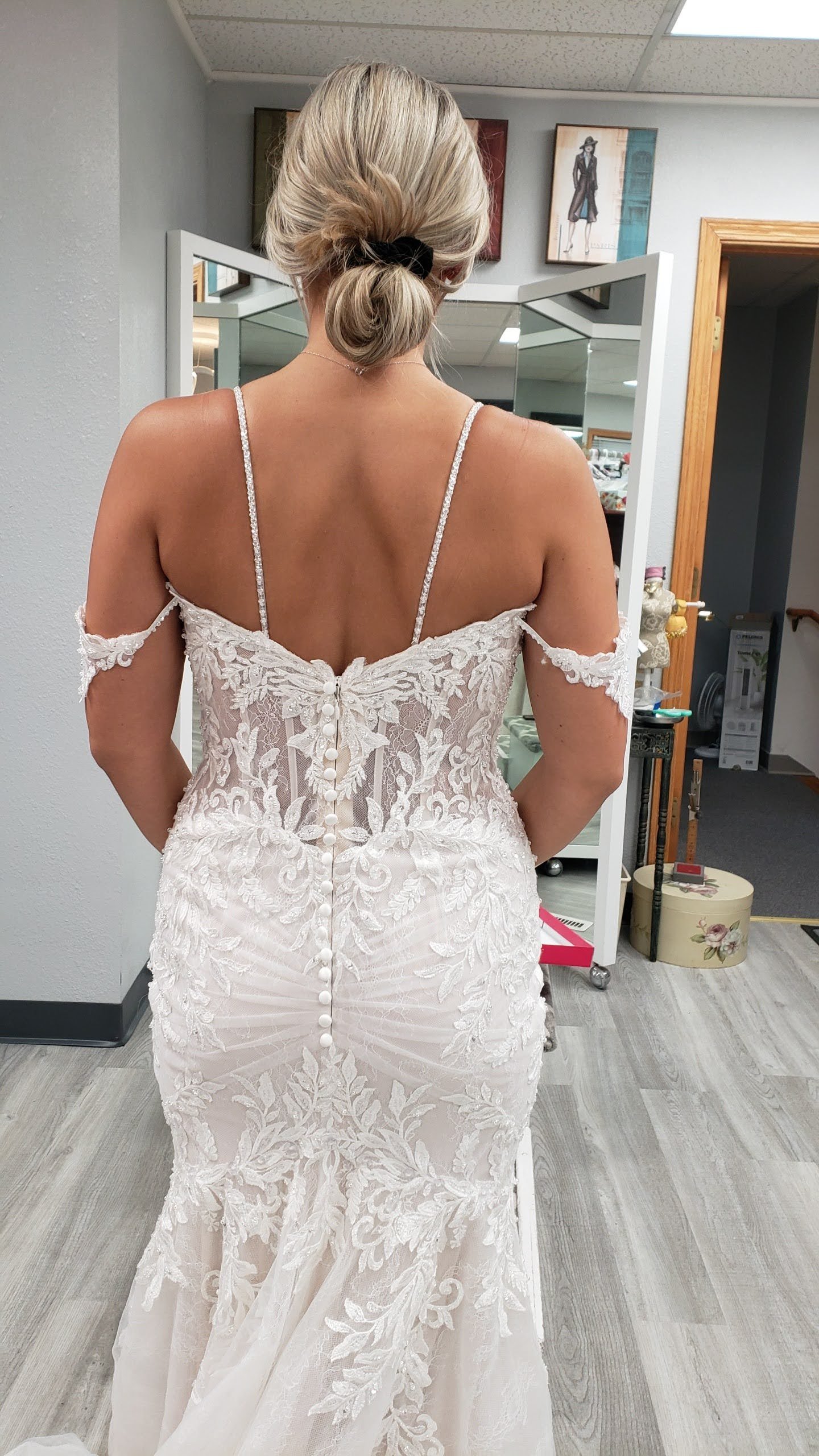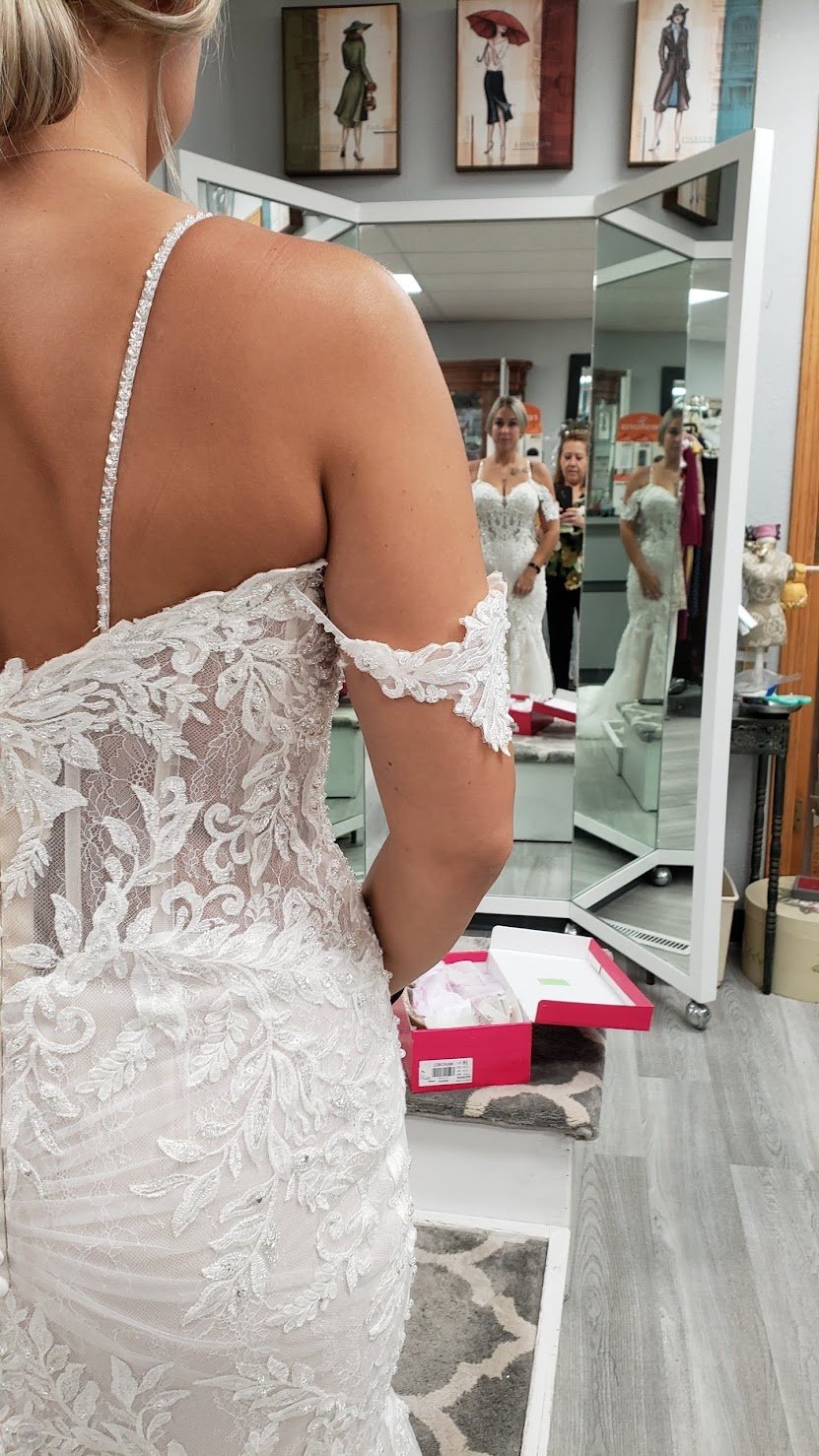How long does it take to alter a wedding dress?
Planning a wedding can be a lot of work, but don’t forget about one of the most important elements - the dress! One of the critical things to consider when it comes to your dress is alterations.
It’s pretty well communicated in the wedding space that you need to plan a healthy amount of time to take care of your wedding dress alterations, typically 3-4 months. But why does it take so long and why are some dresses done faster than others?
In this post, we’ll explore the different factors that contribute to the length of time you’ll need for alterations and when you should start the process:
Where are you having your alterations done?
How many alterations do you need to make, and how complex are they?
How busy is the tailor?
Are you planning on your weight or build changing?
Where are you having your alterations done?
One of the first things you’ll need to consider for your bridal alterations is where to even have them done! This choice can definitely impact how long the alterations will take. You’ll likely run into these options when looking for where to take your wedding dress for alterations:
Boutique in-house seamstress
Independant tailoring or alterations shop
Family friend with a sewing machine
Boutique seamstress
If you’re buying your wedding dress at a bridal/wedding dress salon, some do have their own seamstress or alterations team in-house. We often see that these boutique alterations fall close to that standard 3-4 month timeline. Sometimes you could be waiting longer.
There are definitely some benefits to going directly with in-house alterations. For example, since the dresses and/or suits in the bridal boutique are all the in-house seamstress works on, they will be very familiar with those dresses and designs.
Independent tailoring or alterations shop
This is a stand-alone seamstress or shop that may offer a wide variety of alterations, not just for wedding gowns or formal wear. The turnaround time for a wedding dress in one of these shops can vary a bit more, anywhere from 2 weeks - 2 months or more. In general though, you may find their wait times are shorter than at a boutique.
The best of both worlds is when your wedding boutique has an independent seamstress or alterations shop they refer their clients to. In this case, that seamstress probably has some familiarity with the gowns, designs, and designers the boutique sells, and they might be quicker to turn a job around than an in-house seamstress at the boutique.
Both at an independent shop and a boutique, the time of year and seasonality of weddings will play a sizable role on the wait-time for your wedding dress alterations. We’ll touch on this later on.
Note: if you’re considering working with an independent alterations shop or seamstress, make sure they do indeed work on formal wear, wedding dresses specifically, and have a good amount of experience. Wedding dresses are an alterations speciality all their own, so be sure to ask about this directly so you avoid any unpleasant surprises. At Merci’s Tailoring, we have been altering and perfecting wedding gowns for over 30 years! If you’d like to book a wedding consultation with us, give a call at (319)377-0751 or message us on Facebook.
Friend with a sewing machine
Finding a friend with some sewing skills is something many consider when trying to save on the cost of their wedding dress alterations. And while that could prove to help your budget, it’s not necessarily going to help your timeline.
Professional seamstresses and alterations specialists are trained and well-practiced in sewing and altering – it’s much more than a hobby. Not only that, those that sew for a living are constantly on a timeclock. The sewing jobs they are working on are timed to the minute. That’s how they know how much to charge their customer. And what that affords you is effectiveness and efficiency; they have found and perfected the best and fastest way to do a job. Your home-sewer may need at least two or three times as much time to accomplish the same job as a professional. This can easily nullify any advantage a home-sewer has in work volume.
The hobby-sewer is also less likely to be very familiar with wedding dresses and the intricacies involved with how they are sewn. This means more chances for surprises and unexpected delays in the alterations process.
In our own tailoring and alterations shop in Cedar Rapids, we have played “the rescuer” for many-a project begun with the best-intentioned friend. The project drags on until the last minute, but is ultimately left unfinished because the sewer just didn’t have the skills to know how to proceed.
Do you have a project that needs rescued? Give us a call to see what we can do!
If your family friend with a sewing machine happens to also have their own alterations shop, then you’ve obviously hit the jackpot! How does that impact your timeline, specifically? That might depend on how close you two are and if they’re willing to let your dress bump the line 😉
But there’s more to consider than time
When shopping around for a seamstress, cost and time are probably the top two considerations you’re thinking of. And while we are focusing on the element of time here, there are of course many other things to consider. Some of these considerations include the seamstress’s familiarity with your particular design or designer, their experience working on wedding dresses in general, how convenient it may be for you to travel to your fittings, how comfortable you feel with them, and of course the cost. The timeline need not be your absolute deciding factor.
What are you changing?
Another factor that affects how long your wedding alterations will take is the number of changes you need to make to your dress, and how complex those changes are to make. Simple alterations like adding a couple fabric tacks or shortening straps can usually be completed relatively quickly. However, more complex changes like adding custom sleeves or any alterations involving a zipper will take longer.
Here are examples of what would be considered a “big” project, and a “smaller” project.
Big project
Take in at the sides (with applique)
Change the bodice lining to a different fabric
Add beading to bodice
Hem with 5 layers: 1 satin, 2 tulle, 1 horsehair, 1 lace applique
10-point bustle
Smaller project
Shorten straps (no applique)
Hem with 3 layers: 2 satin, 1 tulle (no applique)
3-point bustle
Here the “big” project could take 8+ weeks at an alterations shop, while the “smaller” project could take just 4 weeks. You’ll notice that one clear difference between the two projects is the presence or absence of applique. This is decorative designs, patterns, or lace pieces that are hand sewn to the dress. When an area to be altered has applique, this needs to be removed by hand before the alteration, then replaced by hand after it’s completed. So if your dress has applique on the hem, or the sides, or anywhere else on the gown you’re looking to alter, be aware your alterations will likely take longer.
You’ll want to discuss with your seamstress what alterations your dress needs to get an accurate picture of how complex the job will be. This will give you a better idea of your overall timeline and help you plan accordingly.
At our Cedar Rapids alterations shop, we offer a “wedding dress consultation”. At this appointment, you’ll try on the dress, be fitted, and discuss all the alterations you’d like to make to the dress. You’ll get a timeline estimate, and the cost of the consultation will become a credit on your final bill if you choose to continue your alterations with us.
Interested in a wedding dress consultation? Call 319-377-0751 to learn more or to schedule your consultation.
The size and complexity of the job is then combined with how busy the seamstress is when you bring in your dress. This varies throughout the year, which we’ll touch on next.
How busy is the seamstress?
The time of year greatly affects how busy the seamstress or shop is and how long it will take to complete your alterations. Summer is wedding season (if you’ve hit your mid to late twenties by now, you are well aware of this), and many tailors may have a backlog of alterations to complete. If you’re getting married during the peak wedding season, it may be necessary to book your alterations further in advance to ensure you have enough time.
How busy does it get during peak wedding season? Busy season at our alterations shop starts with prom in mid February to early March, peaks in June and July, then comes back down in late September to early October. In the off-season we still always quote wedding dress alterations for 4 weeks, but there is a chance you can get them back sooner. At the beginning and end of the busy season, as things are revving up or cooling down, expect a hard 4 week minimum. During the heart of summer, we can start quoting 6-8 week minimums for wedding gowns. How long it will actually take of course depends on the size and complexity of the project we touched on above. But also remember! Even if you have a smaller project that will take less time to actually sew, there is still a line ahead of you. (Keep reading to find a way to shortcut the line!)
Could you avoid the busy season and get your wedding alterations done and out of the way months ahead of time? January fittings for a June wedding? Sure thing! But you want to be very sure your weight, size, or build won’t be changing while waiting for the big day. We’ll discuss this more in the next section.
Are you planning on your weight or build changing?
If you’re trying to lose weight or planning to change your body shape in any way before your wedding, it’s essential to keep this in mind when scheduling your alterations. Changes to your body will obviously impact the fit of your wedding dress, and you don’t want to make alterations to your dress too early, only to have to have them redone later.
It is standard advice and practice that wedding gown consultants do not order a dress in a size smaller than you currently fit, even if the client plans to lose weight. There is always a chance that the client doesn’t make it all the way to their size goal, and that puts them – and the seamstress – in a difficult spot. It is much easier to make a dress smaller, than to make it larger. In some cases, it’s impossible without adding additional fabric, which can change the design of the dress. So it’s a safer bet to risk the dress being too big than too small.
So what to do if you are planning on your dress size changing before you wedding? First, think about this while shopping, and consider choosing a dress with a corset back closure as opposed to a zipper. This will allow some give and take in the fit.
When it comes to alterations, try to schedule them as close to your wedding date as possible to ensure the best fit. Talk with your seamstress or alterations specialist to determine when your first and final fittings should be. They will shed light on the details your alterations need based on your specific dress and can take the current customer volume into account to give you the most accurate plan for your dress
Need last-minute alterations?
Remember that line you’re waiting in for your alterations?
There are some cases, and some alterations shops, that can and will accommodate last minute wedding alterations. In some cases, very last minute, and will allow you to jump that line.
But, there is a catch. It comes at a cost. As many good things in life do, I suppose.
This could be referred to as an expedited or rush fee, and can vary from job to job. In our alterations shop, we offer a rush fee starting at $10 for smaller jobs, starting at $25 for suits, and starting at $50 for wedding dresses.
With the rush fee, it is possible to have a last-minute adjustment, like with our bride Megan. She had lost some weight right before her wedding, and her dress needed to be taken in. We got it done the week before the big day! Didn’t it come out great?
When should you schedule your wedding dress alterations?
In summary, the perfect time to schedule your wedding dress alterations depends on many factors:
If you have a larger alterations project with many changes to make to your dress, and are having them done at a boutique, you may need up to 4 or 6 months.
If you have just a couple smaller things to alter, and are seeing an independent seamstress, you may only need 4 weeks.
If you’re having your alterations done in the summer, you’ll want to plan a little extra time (another 2-4 weeks) due to the busy wedding season.
If you plan on changing your dress size between buying your dress and walking down the aisle, you’ll want to schedule your alterations as close to your wedding date as possible.
Ultimately you’ll want to visit with your seamstress of choice 4-6 months before your wedding date to make an alterations plan for your specific dress and timeline needs.
If you’re in the Cedar Rapids area, we at Merci’s Tailoring would be honored to work on your wedding dress.




